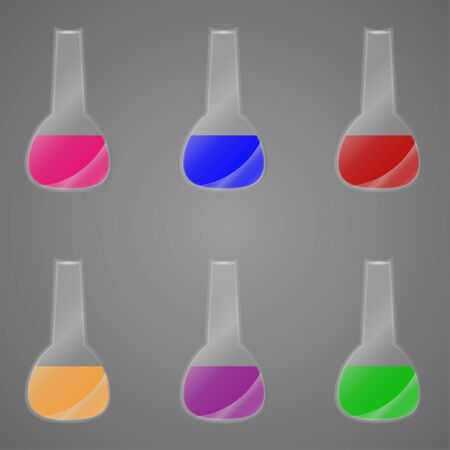Understanding Hyperpigmentation: More Than Skin Deep
Hyperpigmentation is a term that’s become increasingly familiar in the United States, showing up in conversations at dermatology clinics, beauty aisles, and even group chats. But what exactly is hyperpigmentation? At its core, it refers to patches of skin becoming darker than the surrounding area due to an excess production of melanin—the pigment that gives our skin its color. This condition isn’t just about appearance; for many Americans, it can affect confidence and self-expression, especially in a culture where clear, even-toned skin is often celebrated.
The causes of hyperpigmentation are as diverse as America itself. Sun exposure is one of the biggest culprits, thanks to both the love of outdoor activities and varying climates across states. Hormonal changes—such as those experienced during pregnancy or while using birth control—can also trigger what’s known as melasma. Post-inflammatory hyperpigmentation is common too, especially among communities with deeper skin tones who may be more susceptible after acne, eczema, or injuries. And let’s not forget lifestyle factors unique to the American experience: stress, processed diets, and inconsistent sleep patterns can all play a role in skin health.
What makes hyperpigmentation particularly interesting in the U.S. is how cultural attitudes and routines influence both its prevalence and how people choose to address it. From sunscreen habits (or lack thereof) to skincare traditions passed down through generations and exposure to beauty standards shaped by Hollywood and social media, every person’s journey with hyperpigmentation is deeply personal yet widely relatable. In this deep dive, we’ll explore how natural remedies stack up against prescription products—unpacking solutions that resonate with Americans’ diverse backgrounds and lifestyles.
The Power of Natural Remedies
When it comes to tackling hyperpigmentation, many Americans are drawn to natural remedies for their accessibility, affordability, and reputation for gentle care. Lets explore some of the most popular natural ingredients—aloe vera, licorice extract, and vitamin C—and examine their benefits, effectiveness, and safety from a US perspective.
Aloe Vera
Aloe vera is widely recognized in the United States for its soothing properties. It contains aloin, a compound believed to lighten dark spots by inhibiting melanin production. Many people enjoy using pure aloe gel directly on affected areas because its generally well-tolerated and easy to find at grocery stores or pharmacies.
Benefits
- Soothes irritated skin
- Hydrates without feeling greasy
- Mild lightening effect over time
Effectiveness & Safety
Aloe vera offers gradual results; consistent use is key. For most people, its safe with minimal risk of allergic reactions, making it a go-to remedy for sensitive skin types.
Licorice Extract
Licorice extract is gaining traction in American skincare due to its ability to reduce hyperpigmentation by blocking tyrosinase, an enzyme responsible for melanin production. Its commonly found in serums and spot treatments across US beauty aisles.
| Benefit | Effectiveness | Safety Notes |
|---|---|---|
| Reduces dark spots and redness | Visible improvement within several weeks of regular use | Generally safe; rare risk of irritation for sensitive skin types |
Vitamin C
Vitamin C is a staple in American skincare routines. As an antioxidant, it not only brightens existing dark spots but also helps prevent new ones caused by sun damage. The most effective form is L-ascorbic acid, often found in serums that target uneven skin tone.
Benefits & Effectiveness
- Evens out skin tone and reduces discoloration
- Protects against environmental stressors common in urban US settings
- Noticeable results typically seen after 4-8 weeks of consistent use
Safety Considerations
Vitamin C is suitable for most skin types but may cause mild tingling or dryness. Patch testing is recommended—especially when trying a new product for the first time.
A Balanced Approach
Navigating natural remedies in the US means considering individual skin type, lifestyle, and expectations. While these ingredients offer promising results, theyre not instant fixes. Consistency is crucial—along with realistic goals and sun protection—to safely achieve clearer, more even-toned skin.

3. Prescription Solutions: What Dermatologists Recommend
When it comes to tackling hyperpigmentation, many Americans turn to prescription treatments for targeted and reliable results. Dermatologists in the US often recommend a few key products that have stood the test of time and clinical research. Let’s break down the most commonly prescribed solutions, how they work, and what you need to know about their safety and accessibility.
Hydroquinone: The Gold Standard
Hydroquinone is frequently considered the go-to prescription for hyperpigmentation. This topical agent works by inhibiting melanin production, effectively lightening dark spots over time. In the US, hydroquinone is available in both lower-dose over-the-counter forms and higher concentrations by prescription. However, long-term use can lead to irritation or ochronosis (a rare skin discoloration), so dermatologists usually recommend using it for limited periods under medical supervision.
Retinoids: More Than Just Anti-Aging
Prescription retinoids like tretinoin are popular for treating acne and wrinkles, but they also play a powerful role in fading hyperpigmentation. These vitamin A derivatives speed up cell turnover, helping skin shed pigmented cells more quickly. While effective, retinoids can cause dryness, redness, and sensitivity—especially when first starting—so doctors may suggest easing into treatment gradually and always pairing with sunscreen.
Chemical Peels: Professional Exfoliation
Chemical peels performed in dermatology clinics use acids such as glycolic acid or trichloroacetic acid (TCA) to exfoliate the top layers of skin. By removing pigmented surface cells, peels can reveal brighter, more even-toned skin underneath. The strength of these peels is tailored to your needs, but deeper peels require downtime and come with higher risks like scarring or infection if not administered correctly.
Considerations for Safety and Accessibility
While prescription solutions offer potent results, they aren’t suitable for everyone. Factors like skin type, underlying health conditions, and lifestyle need consideration—plus insurance coverage and out-of-pocket costs can be significant barriers for some patients in the US. For those with sensitive skin or concerns about side effects, dermatologists may recommend alternative regimens or combine prescription products with gentler natural remedies for a personalized approach.
Key Takeaway
If you’re considering prescription treatments for hyperpigmentation, consulting a board-certified dermatologist is essential. They’ll help craft a safe plan tailored to your unique needs—because when it comes to your skin journey, one size definitely doesn’t fit all.
4. Pros and Cons: Natural vs Prescription Approaches
When considering hyperpigmentation solutions, Americans often weigh the pros and cons of natural remedies versus prescription products. Here’s a detailed comparison based on effectiveness, side effects, cost, and cultural acceptance within the U.S. healthcare context.
Effectiveness
| Approach | Effectiveness |
|---|---|
| Natural Remedies | Mild to moderate results; may take weeks or months for visible improvement. Best for minor pigmentation issues. |
| Prescription Products | Generally more potent and faster-acting; noticeable results often seen within a few weeks under medical supervision. |
Potential Side Effects
| Approach | Common Side Effects |
|---|---|
| Natural Remedies | Irritation or allergic reaction (e.g., from citrus or essential oils); usually milder but less predictable. |
| Prescription Products | Redness, dryness, peeling, increased sun sensitivity (notably with hydroquinone or retinoids); requires monitoring by a healthcare provider. |
Cost Considerations
Natural remedies: Generally low-cost and accessible without insurance. Many can be found in grocery stores or made at home.
Prescription products: Can be expensive without insurance coverage. Prices vary depending on the medication and pharmacy. Some products, like compounded creams, may not be covered by all insurance plans in the U.S.
Cultural Considerations in the U.S.
The American approach to skincare is diverse, reflecting both a tradition of DIY home remedies and trust in medical advancements. Many Americans experiment with over-the-counter natural options before seeking professional advice. However, there’s also increasing awareness of the importance of dermatological consultation for persistent or severe hyperpigmentation, especially given the country’s focus on evidence-based care and safety regulations.
Summary Table: Natural vs Prescription Solutions in America
| Natural Remedies | Prescription Products | |
|---|---|---|
| Effectiveness | Mild to moderate; slower results | High; faster, clinically proven results |
| Side Effects | Mild irritation possible; unpredictable allergies | Can be significant; monitored by professionals |
| Cost (U.S.) | Low; widely accessible without insurance | Higher; may require insurance or out-of-pocket payment |
| Cultural Fit (U.S.) | Diverse acceptance; aligns with holistic wellness trends | Mainstream for persistent issues; trusted for results under medical guidance |
The Takeaway:
The choice between natural and prescription solutions depends on individual needs, access to healthcare, budget, and personal beliefs about wellness. Consulting with an American dermatologist can help tailor a plan that balances efficacy and safety while respecting personal values.
5. Real Voices: Stories from the Community
When it comes to treating hyperpigmentation, there’s no “one size fits all.” Across the U.S., people from all walks of life have experimented with both natural remedies and prescription products to find what works for their unique skin. Their stories highlight not just the diversity of solutions, but also the importance of patience, cultural heritage, and self-acceptance on this journey.
Embracing Heritage and Nature
Maria, a second-generation Mexican American from Texas, shares: “My abuela always used aloe vera and lemon juice for dark spots. I tried those first—sometimes they helped with mild marks, but deeper patches needed something stronger. Still, I love that these remedies connect me to my roots.”
A Balancing Act Between Science and Tradition
Derek, an African American tech professional in Atlanta, recalls his struggle with post-acne marks: “I started with over-the-counter serums and turmeric masks after reading about them online. When results were slow, my dermatologist prescribed hydroquinone. It worked faster, but I still use shea butter because it’s been in my family forever.”
Learning Through Trial and Error
Sophia, a Korean American college student in California, notes: “K-beauty routines are big in my community, so I tried rice water and licorice root extract. Eventually, a prescription retinoid made the biggest difference for me. It took some experimenting—and a lot of patience!”
The Power of Support and Representation
Jamie, who identifies as nonbinary and Latinx from New York City, emphasizes the emotional aspect: “Seeing other people share unfiltered photos online made me less self-conscious about my hyperpigmentation. Whether you use home remedies or prescriptions, it’s good to know you’re not alone.”
Diverse Paths, Shared Experiences
These real-life experiences remind us that treating hyperpigmentation is as much about personal identity and community support as it is about science or tradition. From kitchen ingredients passed down through generations to modern dermatological advances, Americans continue to blend old wisdom with new knowledge—proving that every skin story deserves respect.
6. Choosing What’s Right for You
When it comes to treating hyperpigmentation, there’s no one-size-fits-all solution. Each journey is unique, shaped by your skin type, cultural background, financial situation, and access to healthcare resources. Here’s how you can make informed decisions that honor your individuality.
Understand Your Skin Type
Different skin types respond differently to natural remedies and prescription products. For example, those with melanin-rich skin may experience post-inflammatory hyperpigmentation more easily and might benefit from gentler approaches to avoid irritation. Take time to learn about your skin’s specific needs before choosing a treatment plan.
Honor Cultural Practices
Cultural heritage often influences the skincare rituals and remedies we trust. Whether you grew up using turmeric masks or have always relied on dermatologist-recommended solutions, know that both traditional wisdom and modern science can offer valuable tools for managing hyperpigmentation. Embrace what feels authentic to you while staying open to new possibilities.
Consider Your Budget and Accessibility
The cost and availability of treatments are real factors. Natural remedies like aloe vera or licorice extract can be affordable and accessible for many people, while prescription products may require insurance coverage or out-of-pocket expenses. Don’t let financial limitations discourage you; prioritize consistency and safety in whatever method you choose.
Consult a Professional When Needed
If over-the-counter or at-home remedies aren’t working, or if you’re unsure about which treatment aligns best with your needs, consulting a dermatologist—especially one familiar with diverse skin tones—can provide personalized guidance and peace of mind.
Your Journey Is Yours Alone
No matter which path you take—natural remedies, prescription products, or a combination of both—remember that honoring your unique context is key. Celebrate your individuality and make choices that support not just your skin health but also your sense of self and well-being.

